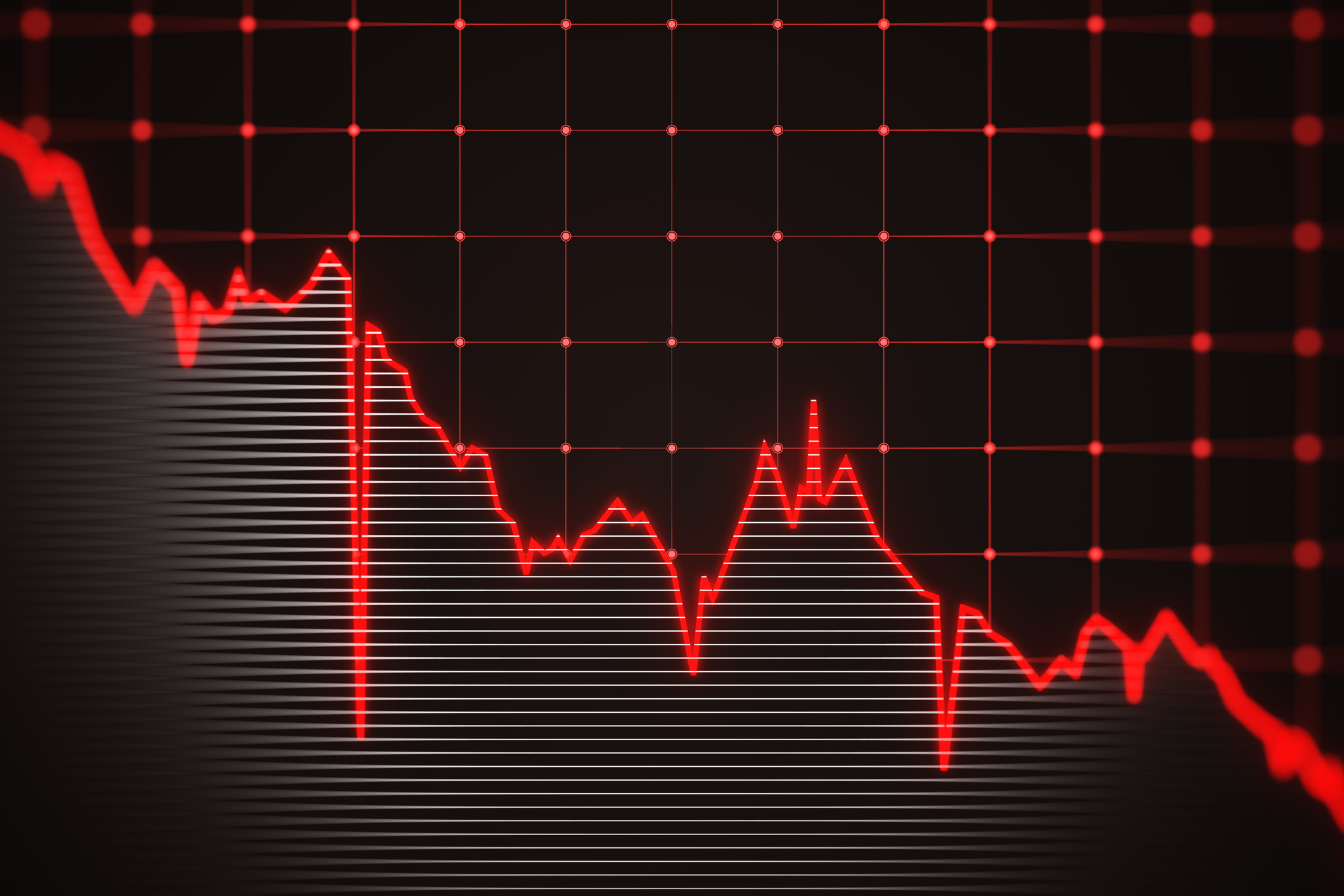The Best Utility Stocks to Buy
Utility stocks are defensive plays for investors, offering stability and reliable dividends. Here's how you can find the best ones to buy.


When turbulence sends the stock market into a tailspin, investors look for a handrail to brace themselves with. And that handrail often comes in the form of utility stocks.
The utility sector is made up of companies that fill some of humanity's most basic needs – electricity, heating gas, water and more.
And much like with consumer staples stocks, during times of economic difficulty, consumers will cut back on just about any number of expenditures before they stop paying their utility bills.

Sign up for Kiplinger’s Free E-Newsletters
Profit and prosper with the best of expert advice on investing, taxes, retirement, personal finance and more - straight to your e-mail.
Profit and prosper with the best of expert advice - straight to your e-mail.
This provides a steadier baseline of business demand than just about any other sector.
Today, we're going to take a closer look at the utility sector, including how it's defined, why investors seek exposure to it, and how to find the best utility stocks to buy.
What are utility stocks?
The short answer: Utility stocks are companies whose primary businesses involve distributing essentials such as power and water.
For a more complete answer, let's look to the Global Industry Classification Standard (GICS) – a framework used by major index providers to help classify public companies.
According to the GICS, "[The utility sector] comprises utility companies such as electric, gas and water utilities. It also includes independent power producers & energy traders and companies that engage in generation and distribution of electricity using renewable sources."
Why do investors buy utility stocks?
The primary driver behind interest in the utility sector is similar to that of healthcare stocks and consumer staples: They deal in necessities people can't go without.
As such, they enjoy a "stickiness" in revenues and earnings that would make most other industries chartreuse with jealousy.
For this reason, utility stocks are considered to be defensive stocks.
Indeed, they are the defensive stock. Because if your financial situation becomes dire enough, you very likely will eat less and possibly even cut back on some prescriptions before you let the power go out or have the water shut off.
Understandably, utility companies tend to have extremely little economic sensitivity.
They generate relatively stable revenues and profits. They create wads of free cash – and then turn right back around and hand much of that cash back to shareholders (as dividends).
In fact, utilities are almost always among the best-yielding market sectors.
Between their steady businesses and substantial dividends, you can see how these stocks can sometimes provide not just some level of safety, but upside potential when most other equities are on the rocks.
That said, utility stocks are hardly invincible and they don't always provide the protection they've become famous for.
During the 2020 COVID bear market, utilities were in the middle of the sector pack, providing no more protection than consumer discretionary stocks or tech stocks.
And during the Great Recession bear market, utilities were among the three best sectors (behind healthcare and staples), sure … but they still lost more than 40% at the market's nadir.
Also, utilities' stability works both ways. Many regulated utilities can slowly raise their rates over time, providing a continuous bump to the top and bottom lines.
However, that rate growth is often capped at a low-single-digit rate.
Combine that with the fact that utilities, which are constrained to certain geographic regions, can really only expand their user base with population growth in their areas of operations, and utilities typically have a very low ceiling on growth.
That said, an emerging trend has lit a fire under the feet of some utilities: artificial intelligence (AI). From a summer 2024 Goldman Sachs report:
Interestingly, the sector has become a derivative AI play, points out Ryan Hammond of Goldman Sachs Research. The rise of AI is expected to contribute to a substantial increase in power usage over the next decade, which could meaningfully drive electricity producers' businesses.
In other words, the sector may be staring down a rare opportunity to supercharge its results.
How to find the best utility stocks to buy
We can't tell you exactly what you'd want out of a utility stock – you might prefer larger companies to smaller firms, or you might only be interested in deep-value stocks from the space.
But we can help you start your search with a basic quality screen.
To get to the following list of the best stocks to buy in the utilities sector, we've looked for companies …
Within the S&P Composite 1500: This index is a combination of the S&P 500, S&P MidCap 400, and S&P SmallCap 600.
This screen allows for stocks of different sizes, but it still represents roughly 90% of America's market capitalization, weeding out the smallest stocks.
With a long-term estimated earnings-per-share growth rate of at least 5%: We want some level of earnings growth out of these names.
But we have to keep our expectations here on planet Earth – they are utilities, after all. (Just remember: Expectations don't guarantee results.)
With a dividend yield of at least 2.5%: Dividends aren't always the point with utility stocks … but they're often the point.
Given that, we'd like to see a yield that's well above what the market has to offer. So we're only including utility stocks that yield at least a little more than double the S&P 500's meager 1.2% rate.
That have grown their dividends by at least 5% over the past year: This screening component is about both generating cash for investors and also testing for quality.
Per the former: We don't want to just lock in a higher-than-average yield – we want stocks whose dividends can actually outpace inflation so our purchasing power isn't declining over time.
But dividend growth is also a nod toward a company's financial quality, as it shows management's confidence in being able to finance higher payments.
With at least five covering analysts: We'd like to look at stocks that are on Wall Street analysts' radar, which makes it likelier that there's both more reporting and more insights on these companies.
The more research we have at our disposal, the more educated a decision we can make.
With a consensus Buy rating: All of the stocks must have an average broker recommendation of 2.5 or less within S&P Global Market Intelligence's ratings scale.
S&P Global Market Intelligence converts analysts ratings into a numerical scale. Anything with a score of 2.5 or less is considered a Buy.
Stock (ticker) | Dividend yield | Estimated annual dividend-per-share growth rate | Long-term EPS growth rate | Analysts consensus recommendation |
IDACORP (IDA) | 2.9% | 5.5% | 8.3% | 1.75 |
NiSource (NI) | 2.8 | 6.8 | 8.0 | 1.53 |
DTE Energy (DTE) | 3.1 | 6.9 | 8.0 | 2.05 |
New Jersey Resources (NJR) | 3.6 | 5.4 | 7.6 | 2.22 |
CMS Energy (CMS) | 2.9 | 5.8 | 7.3 | 2.21 |
Sempra (SRE) | 3.7 | 5.6 | 7.0 | 2.11 |
Ameren (AEE) | 2.6 | 6.3 | 6.9 | 2.24 |
Public Service Enterprise Group (PEG) | 3.1 | 5.7 | 6.6 | 2.35 |
Essential Utilities (WTRG) | 3.2 | 6.6 | 6.5 | 1.46 |
FirstEnergy (FE) | 4.1 | 5.6 | 5.7 | 2.39 |
Related content
Get Kiplinger Today newsletter — free
Profit and prosper with the best of Kiplinger's advice on investing, taxes, retirement, personal finance and much more. Delivered daily. Enter your email in the box and click Sign Me Up.
Kyle Woodley is the Editor-in-Chief of WealthUp, a site dedicated to improving the personal finances and financial literacy of people of all ages. He also writes the weekly The Weekend Tea newsletter, which covers both news and analysis about spending, saving, investing, the economy and more.
Kyle was previously the Senior Investing Editor for Kiplinger.com, and the Managing Editor for InvestorPlace.com before that. His work has appeared in several outlets, including Yahoo! Finance, MSN Money, Barchart, The Globe & Mail and the Nasdaq. He also has appeared as a guest on Fox Business Network and Money Radio, among other shows and podcasts, and he has been quoted in several outlets, including MarketWatch, Vice and Univision. He is a proud graduate of The Ohio State University, where he earned a BA in journalism.
You can check out his thoughts on the markets (and more) at @KyleWoodley.
-
 Customer Services are Strained at the SSA, You Should Plan Around These Federal Holidays
Customer Services are Strained at the SSA, You Should Plan Around These Federal HolidaysIf you have a question or need information from a federal agency, check the federal holiday schedule to make sure you get your business done before they close.
By Donna LeValley
-
 Stock Market Today: No 'Powell Put'? No Problem
Stock Market Today: No 'Powell Put'? No ProblemInvestors, traders and speculators look beyond both another Trump post and more signs of slowing economic activity.
By David Dittman
-
 Stock Market Today: No 'Powell Put'? No Problem
Stock Market Today: No 'Powell Put'? No ProblemInvestors, traders and speculators look beyond both another Trump post and more signs of slowing economic activity.
By David Dittman
-
 First 100 Days: Trump's Impact on Your Finances
First 100 Days: Trump's Impact on Your FinancesHere are some opportunities to consider regarding investing, interest rates and tax cuts as the financial landscape shifts under the new administration.
By Daniel Razvi, Esquire
-
 What Would Happen if You Put Your Tax Refund in an IRA?
What Would Happen if You Put Your Tax Refund in an IRA?Not only could you get a tax break, but the compounding effect over 35 years could turn the average refund into nearly $14,000.
By Romi Savova
-
 Children Can't Afford to Fly the Nest? Here's How to Help
Children Can't Afford to Fly the Nest? Here's How to HelpThe high cost of living means more adult children are staying at home. Here are four ways to help financially so they can eventually spread their wings.
By Kelli Kiemle, AIF®
-
 How Much Will Car Prices Go Up With Tariffs?
How Much Will Car Prices Go Up With Tariffs?Tariffs could drive car prices up even higher, for new and used cars, as well as for American brands.
By Jim Patterson
-
 What Is the Buffett Indicator?
What Is the Buffett Indicator?"It is better to be roughly right than precisely wrong," writes Carveth Read in "Logic: Deductive and Inductive." That's the premise of the Buffett Indicator.
By Charles Lewis Sizemore, CFA
-
 Stock Market Today: Dow Drops 699 Points After Powell Speech
Stock Market Today: Dow Drops 699 Points After Powell SpeechFed Chair Powell warned of a slowing economy and higher inflation but said the central bank isn't ready to cut rates just yet.
By Karee Venema
-
 I Have $20,000 to Invest. What Should I Do?
I Have $20,000 to Invest. What Should I Do?We asked a financial expert to weigh in on where to invest $20,000.
By Charles Lewis Sizemore, CFA